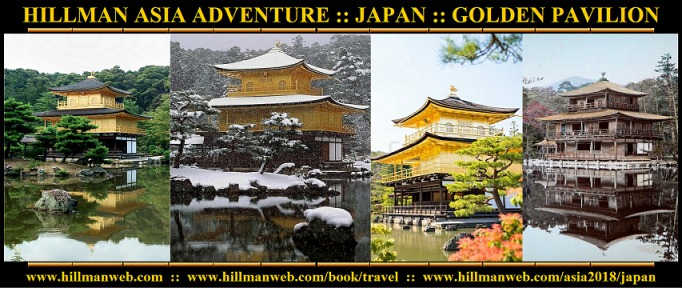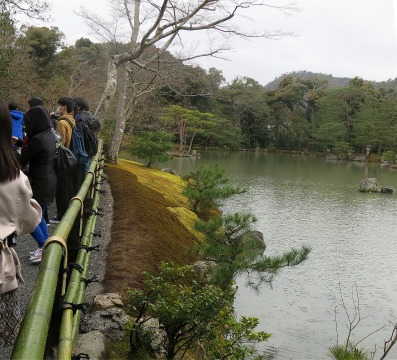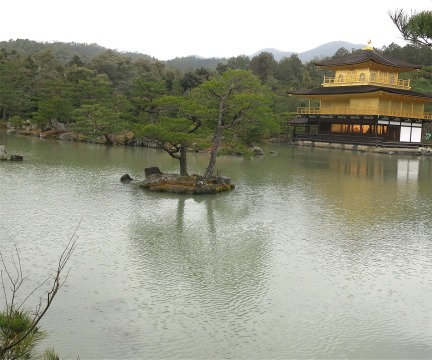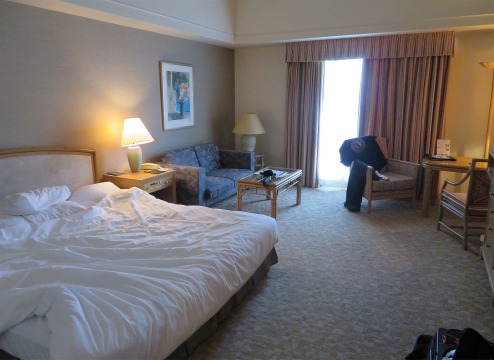Temple of the Golden
Pavilion or Kinkaku-ji (officially named Rokuon-ji - literally "Deer Garden
Temple") is a Buddhist temple in Kyoto made famous in 1950 when it was
destroyed by arson after surviving World War II. intact. It is one of the
most popular buildings in Japan, attracting a large number of visitors
annually. It is designated as a National Special Historic Site and a National
Special Landscape, and it is one of 17 locations making up the Historic
Monuments of Ancient Kyoto which are World Heritage Sites.
During the Onin war (1467–1477),
all of the buildings in the complex aside from the pavilion were burned
down.
The pavilion was burned down
in 1950 by a 22-year-old novice monk, who then attempted suicide on the
Daimon-ji hill behind the building. He survived, and was subsequently taken
into custody. The monk was sentenced to seven years in prison, but was
released because of mental illnesses. During the fire, the original statue
of Ashikaga Yoshimitsu was lost to the flames (now restored).
The present pavilion structure
dates from 1955, when it was rebuilt. The pavilion is three stories high,
12.5 meters in height. The reconstruction is said to be a copy close to
the original, although some doubt such an extensive gold-leaf coating was
used on the original structure. In 1984, the coating of Japanese lacquer
was found a little decayed, and a new coating as well as gilding with gold-leaf,
much thicker than the original coatings was completed in 1987.
Additionally, the interior of
the building, including the paintings and Yoshimitsu's statue, were also
restored. Finally, the roof was restored in 2003. The name Kinkaku is derived
from the gold leaf that the pavilion is covered in. Gold was an important
addition to the pavilion because of its underlying meaning. The gold employed
was to mitigate and purify any pollution or negative thoughts and feelings
towards death. The material that covers the Golden Pavilion creates an
impression that stands out because of the sunlight reflecting and the effect
the reflection creates on the pond.
The Golden Pavilion is set in
a magnificent Japanese strolling garden -- a landscape garden in the go-round
style. The pavilion extends over a pond, called Mirror Pond, that
reflects the building. The pond contains 10 smaller islands. The zen typology
is seen through the rock composition, the bridges, and plants that are
arranged in a specific way to represent famous places in Chinese and Japanese
literature. The four stones forming a straight line in the pond near the
pavilion are intended to represent sailboats anchored at night, bound for
the Isle of Eternal Life in Chinese mythology.
We took many photos from the
vantage and focal points that were established because of the strategic
placement of the pavilion to view the gardens surrounding the pavilion.




![]()


![]()


![]()

